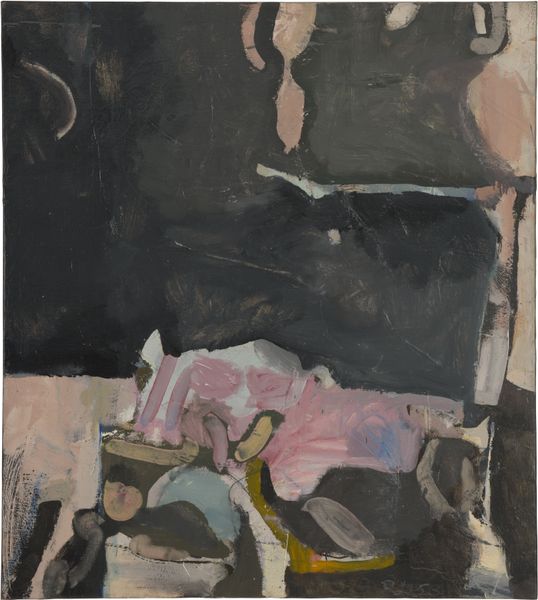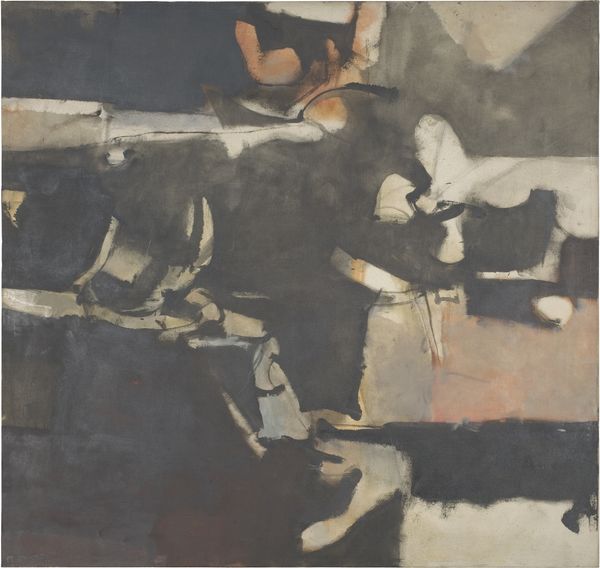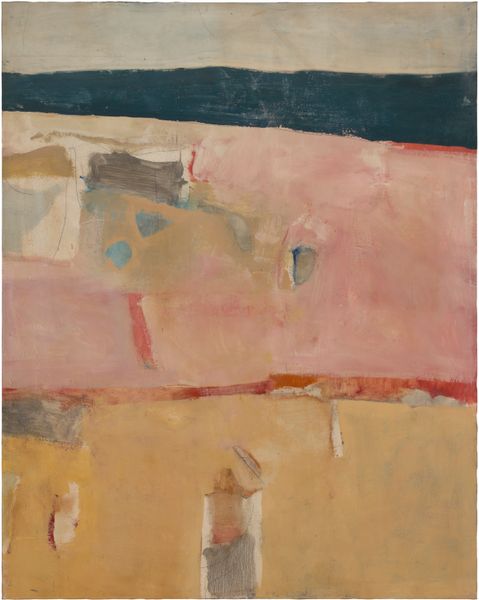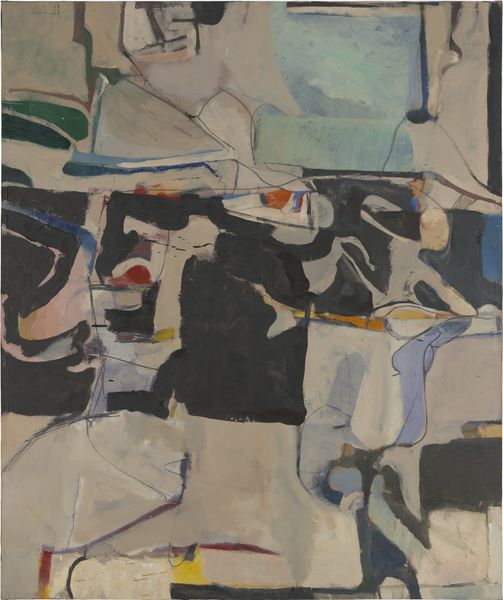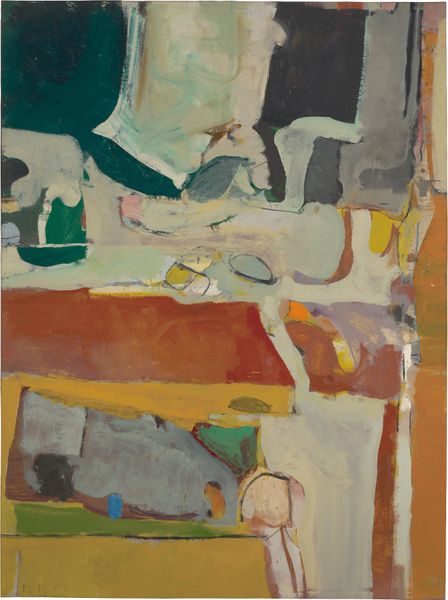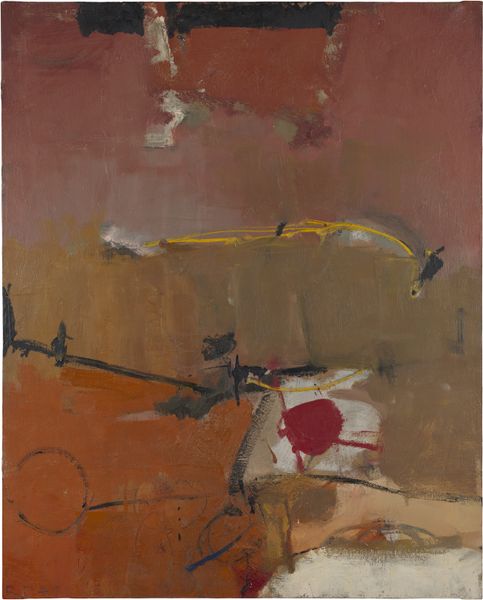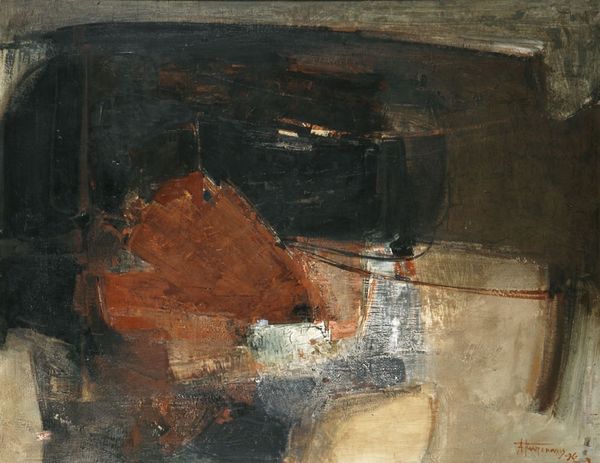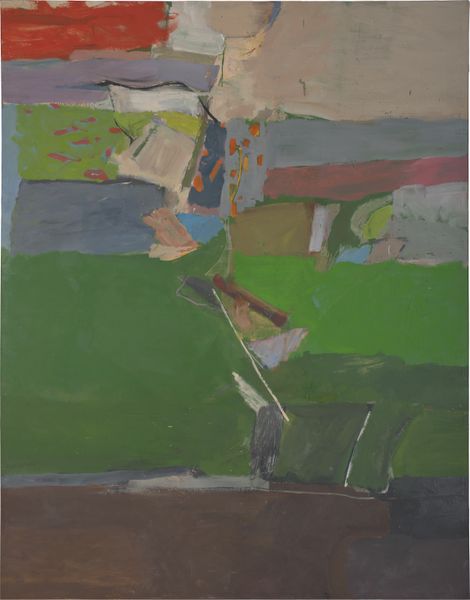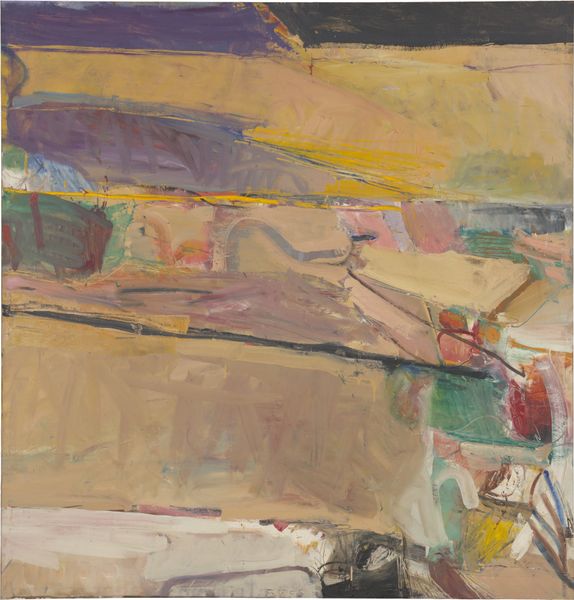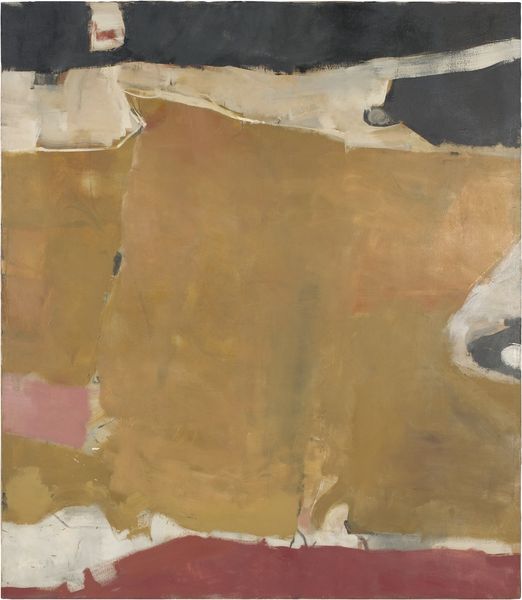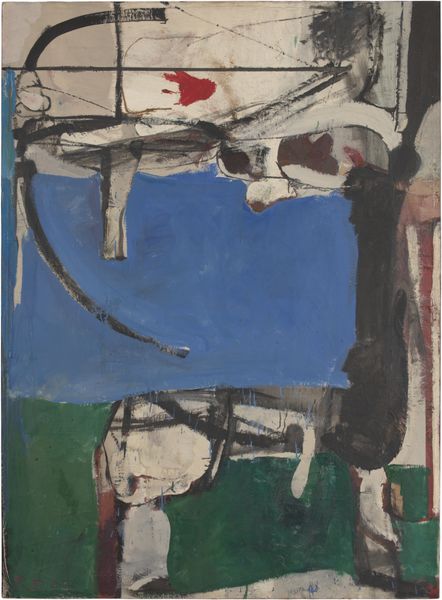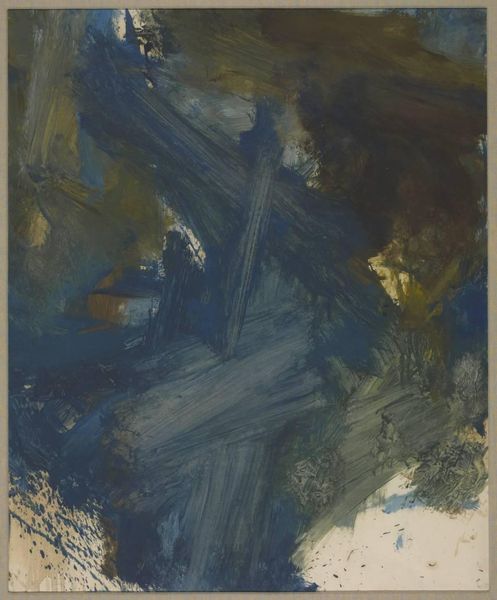
painting, oil-paint
#
abstract-expressionism
#
abstract painting
#
painting
#
oil-paint
#
oil painting
#
bay-area-figurative-movement
#
underpainting
#
painterly
#
abstraction
#
painting painterly
Dimensions: 177.8 x 155.6 cm
Copyright: Richard Diebenkorn Foundation
Curator: Well, here we have Richard Diebenkorn's "Berkeley #20," painted in 1954 using oil paint. It’s a striking example of his early abstract expressionist phase. Editor: My first impression? It’s moody. All those grays feel very… introspective. Like a city under a thick fog, or a thought half-formed. I feel a strange tension that is hard to look away from. Curator: Absolutely. What’s interesting is how Diebenkorn uses those muted tones. In the postwar years, abstraction became a really powerful visual language to express uncertainty. A lot of artists, particularly in America, turned away from the figurative as they engaged with art in the post-war period, focusing on form and color to express these underlying sentiments of the era. Editor: The textures, too, are pretty heavy, especially in the darker areas. Almost sculptural. What I really want to know is what was he looking at, thinking about? Curator: Scholars note how Diebenkorn would have been looking intently at the landscape, in this case from his studio in Berkeley, California. In this work we see not only an interpretation of place, but an active, embodied practice through visible brushstrokes, and the erasure of previous marks that makes for this underpainting effect. There’s a history embedded right there on the canvas. Editor: And what's so fascinating is that he's managing to distill it down to this essential...feeling, somehow. It almost transcends its time. Does that make sense? Curator: It does. That distillation you speak of, that essence, connects it, oddly enough, to later landscapes, even though he moves away from pure abstraction later. Think of the Ocean Park series. Editor: It makes you wonder about the way we define abstraction, right? Isn't there always something real, something felt, lurking beneath the surface? It's like that line in poetry about feelings, I guess. No idea, but in feeling. Curator: Beautifully put. Even at its most seemingly detached, art reflects, shapes, and is shaped by its environment, be it cultural, social, or physical. It just takes different forms, uses different languages. Editor: Well, this language is both challenging and haunting, and after our talk, perhaps now it speaks more clearly than before. Curator: Agreed. It invites a deeper conversation about art's role as a reflection of our world and as a window into the artist’s perspective of it, past and present.
Comments
No comments
Be the first to comment and join the conversation on the ultimate creative platform.
